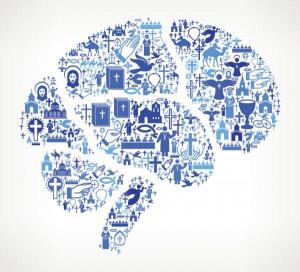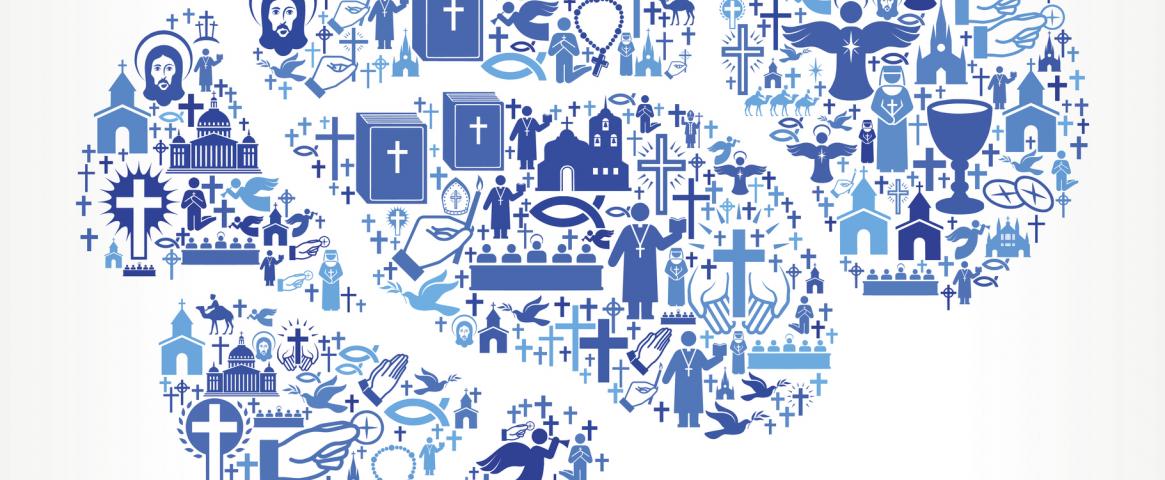By Taylor White

Religion incorporates social frameworks known to help build resilience, a key factor in combating the effects of mental disorders.
“I think once the boundaries are established and they understand that we are equal stakeholders in the wellbeing of the community, it’s a natural alliance,” said Michigan State University psychiatrist Dr. Farha Abbasi.
During a Feb. 15 talk at the American Association for the Advancement of Science annual meeting, Abbasi and other experts shared their views on how to tackle mental illness by factoring in the contributions of community, psychiatry and brain research.
More than 44 million American adults live with a mental disorder, according to the National Institute of Mental Health.
For individuals who have mental disorders, resilience — the ability to bounce back after facing extreme stress — is key. This trait is not inherited, but instead is cultivated through learned actions and thoughts, according to the American Psychological Association. People who have mental disorders could thus be trained in resilience as a way to improve their health and quality of life, the experts said.
Those who have an attachment to others and to God tend to find greater meaning and growth during times of grief or trauma than those who avoid attachment, Melissa M. Kelley, a pastoral psychologist at the Boston College School of Theology and Ministry, found in her studies.
Her research found that during times of stress, individuals without attachment to others struggled to identify goals or a reason for living. But those with a theological perspective tend to view the stressful experiences as part of a larger narrative, which helps them overcome hardship.
People make sense of their lives and the world by processing experiences in light of their core values, she said. And that process forms the roots of human resilience.
“We want our life stories to appear to hang together. Nobody wants to feel like they’re living a story that makes no sense,” Kelley said. “And this idea of coherence to our stories becomes very important in times of loss and trauma.”
Abbasi looks at the issue from an Islamic perspective. When groups unite in prayer five times a day, that helps instill the concepts of equity and equality, she said. She finds similarities between Islamic prayer rituals and yoga concepts because they both allow people to de-stress through stretching, meditating, and letting blood flow to the head. Socializing after prayer and connecting with each other through acts of charity also helps create bonds that build resilience.
Abbasi, who works to destigmatize mental health disorders in the Islamic community by bringing faith leaders into the conversation, plans to use concepts of prayer, charity and community building to create a safe space for people with mental disorders.
“When someone is going through a mental health crisis, the community has to come together and support them,” she said.
From a physiological perspective, to better understand how social factors help build resilience and develop possible therapeutics for mental disorders, neuroscientist Scott Russo at the Icahn School of Medicine at Mount Sinai simulated chronic stress situations in mice.
His team placed small docile mice inside the cages of larger, more aggressive “bully” mice for five minutes a day for 10 days, then in a cage next door to the larger mice for 24 hours. The smaller mice, seen as intruders, were pinned to the ground and occasionally bitten by the bully mice.
Behavior and immune response studies showed that some of the intruder mice released increased levels of stress hormone and did not sleep well. They also lost interest in exploring open environments and foraging for food, behaviors analogous to those in humans who have depression. Further, electron microscopy revealed damaged blood vessels in the brains of those mice. Other mice, however, who demonstrated resilience by engaging with the bully mice and continuing to explore their environment, showed little or no blood vessel damage, though their stress hormone and anxiety levels also increased.
The findings, combined with examinations of the effects of positive social experiences on the brain and body, could lead to ideas for new behavioral therapies.
“I want people to think about not just drug therapeutics,” Russo said. “I think from a faith-based perspective, we should be thinking about understanding the broad array of active mechanisms that these types of experiences are changing in our bodies to promote resilience to stress.”
Taylor White is a senior at Suffolk University majoring in biology with a minor in journalism. She is a News & Analysis intern at NOVA WGBH and former editorial intern at Dana-Farber Cancer Institute. She is a contributing writer to her school’s Office of Public Affairs and independent student newspaper, The Suffolk Journal. She has a podcast called The Suffolk Science Scoop. Follow her on Twitter @tcwhite15 or email her at white.taylor15@gmail.com.




